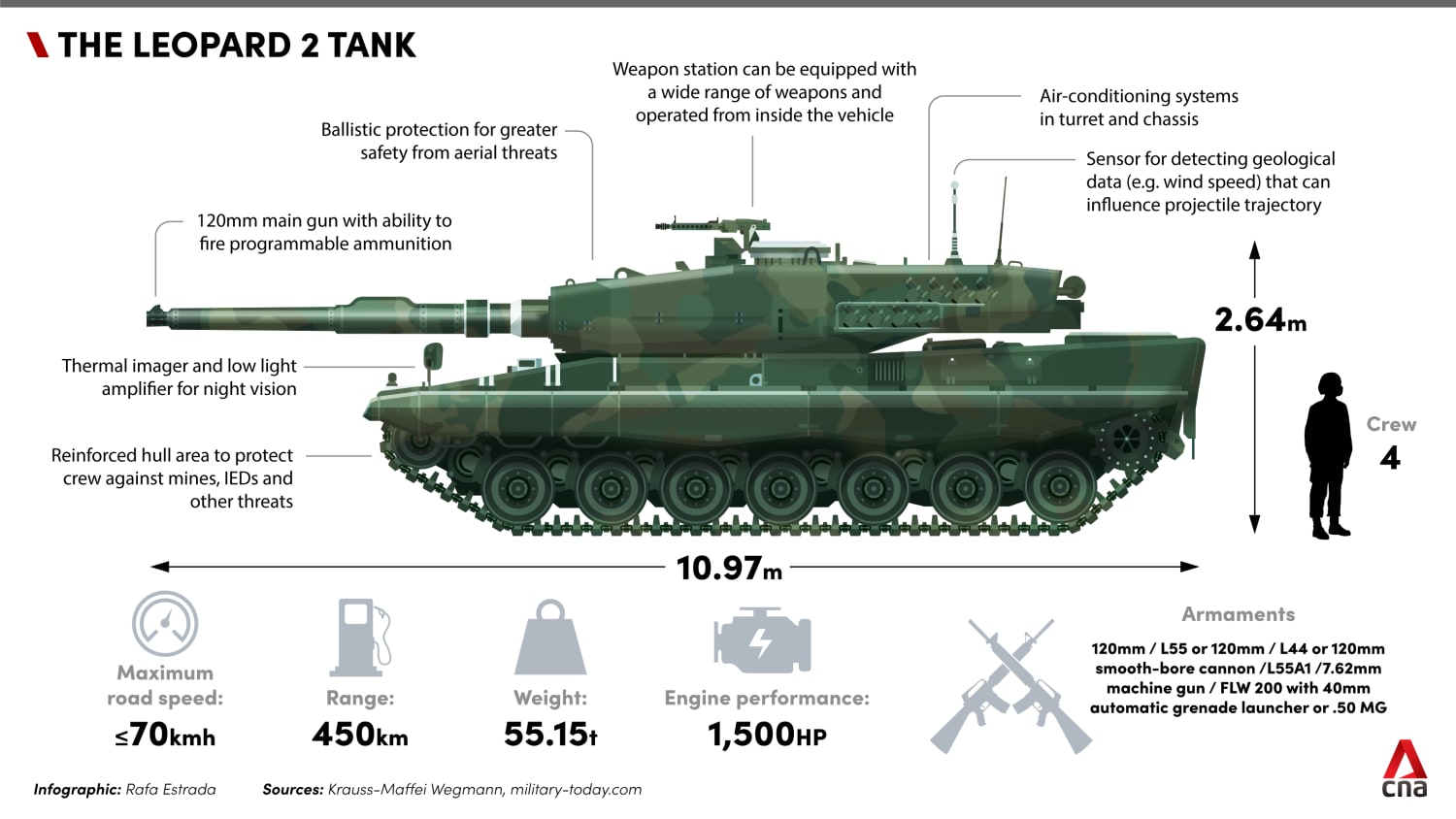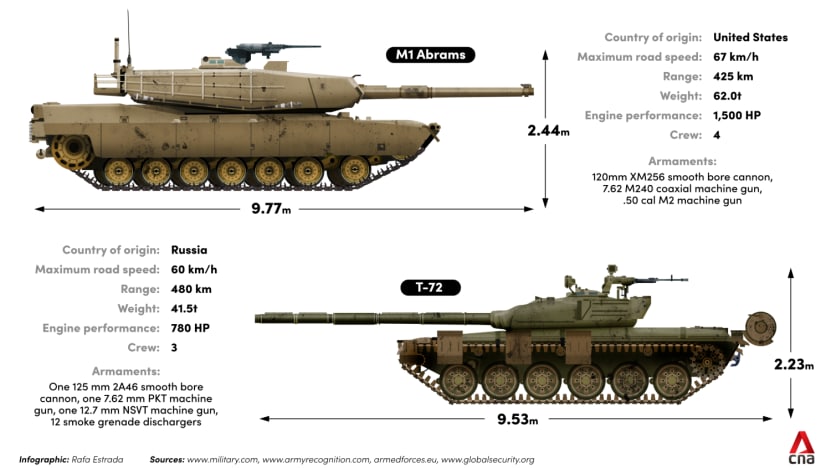Snap Insight: US, Germany will send tanks to Ukraine but are they a game-changer?
German Leopard 2 and American M1 Abrams tanks, in addition to British Challenger 2 tanks pledged earlier in January, will be the first heavy combat vehicles sent to join in the fight against Russian forces. Defence analyst Mike Yeo says the decision is significant.

German-made Leopard tanks are reputed to be among the best in the world (Photo: AFP/File/Christof STACHE)
MELBOURNE: The decision by the United States and Germany, announced just hours apart on Wednesday (Jan 25), to supply Ukraine with advanced battle tanks is a significant step in the war effort.
Germany will send its own Leopard 2 tanks and allow European nations to donate their tanks to Ukraine – required under weapons export laws for the German-built tanks. The US has pledged to send 31 of its M1 Abrams tanks to Ukraine. The United Kingdom had earlier said it would send 14 Challenger 2 tanks.
After calling on Western countries to send tanks for months, Kyiv has hailed the move as a potential turning point in the war. But how much of a game-changer are these tanks expected to be?
WESTERN TANKS COULD SPEARHEAD A COUNTEROFFENSIVE
These tanks will be the first Western heavy combat vehicles to join the fight and will be useful in defending its current positions. But they will also be the first of donated weapons that can be used directly in offensive actions.


Previous tanks donated by North Atlantic Treaty Organization (NATO) members have been in the form of refurbished Russian tanks, mostly upgraded early-model T-72 tanks considered (at best) slightly inferior to the newest Russian tanks. Earlier donations such as Javelin anti-tank and Stinger anti-aircraft missiles are seen as more defensive weapons, while HIMARS guided rockets are more of an indirect support weapon.
Though detractors (including the Kremlin) scoff that Western tanks will be lacking in number and quality against the latest Russian tanks, such as the T-72B3 and T-90, it is actually widely accepted that the Leopards and Challengers are superior.
In particular, the standard Russian 125mm armour-piercing shells have been proven to be unable to penetrate the Challenger 2’s frontal armour (where it is the thickest) during the one occasion they have seen combat in the 1991 Persian Gulf War.
These Western tanks are significantly heavier on account of thicker armour and better protection. More importantly, they have better gunsights and optics, improving the likelihood of successfully hitting opponents with the first shot, an important consideration in tank-versus-tank combat.
IN TIME FOR A SPRING DEPLOYMENT
The timing will be significant. Main battle tanks will come in handy in spring as Ukraine is expected to resume its counteroffensive against invading Russian forces. The Leopards and Challengers are expected to reach the battlefield in time for spring.
Lighter vehicles, like the French AMX-10RC wheeled combat vehicles and American Bradley infantry fighting vehicles, are also expected to arrive in the coming months.
But the US M1 Abrams tanks are believed to be new-build vehicles and will not reach Ukraine till later this year at the earliest.
Also, the advantages of these tanks will need well-trained crews to be fully realised. There are valid concerns that the West’s belated decision to send them means that Ukrainian crews will not be fully trained on them before being sent into action.
TURNING THE TIDE?
Some analysts had earlier declared tanks obsolete in the face of effective anti-tank weapons, which contributed to Russian losses of almost 970 tanks according to open-source intelligence defense website Oryx.
But this could be attributed to piecemeal employment of the tanks which often saw them operating isolated from infantry, as well as the initial rapid push towards Kyiv on a small number of main roads, which left Russian columns vulnerable to roadside ambushes.
It is hoped that the heavier Western tanks will make a decisive difference and turn the tide for Ukraine, given its demonstrated ability to employ armour successfully in conjunction with infantry and artillery.
Mike Yeo is the Asia correspondent for US-based defence publication Defense News.

















